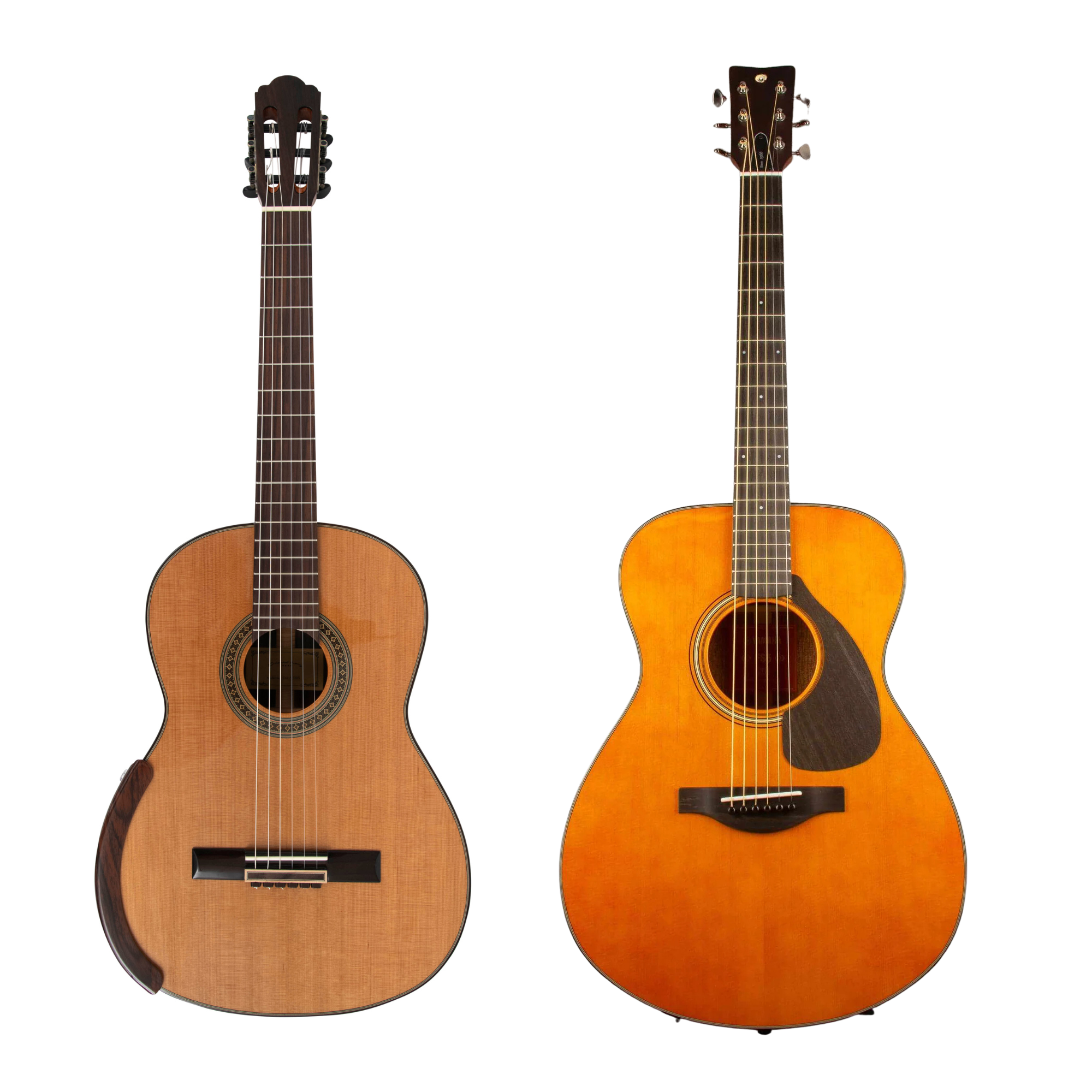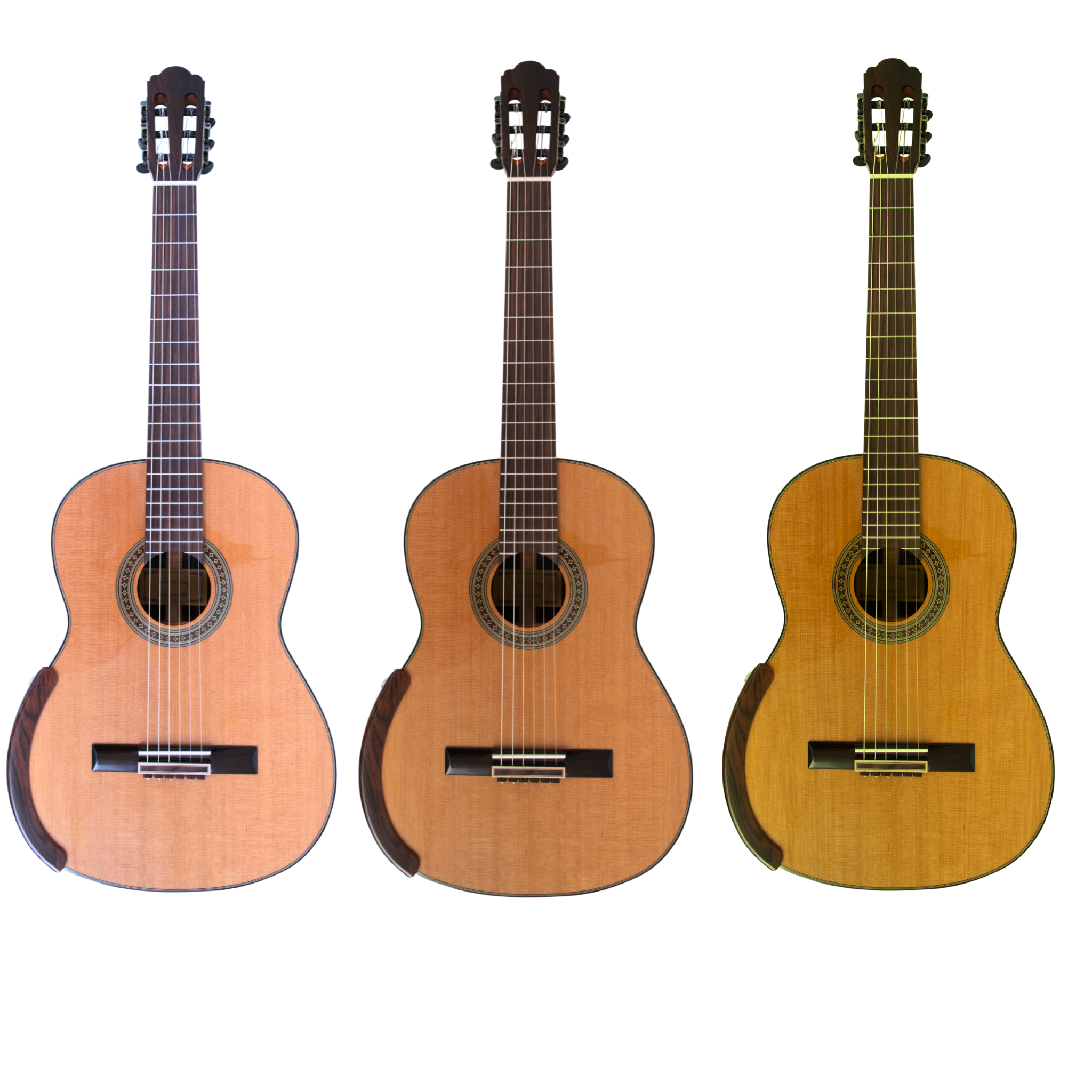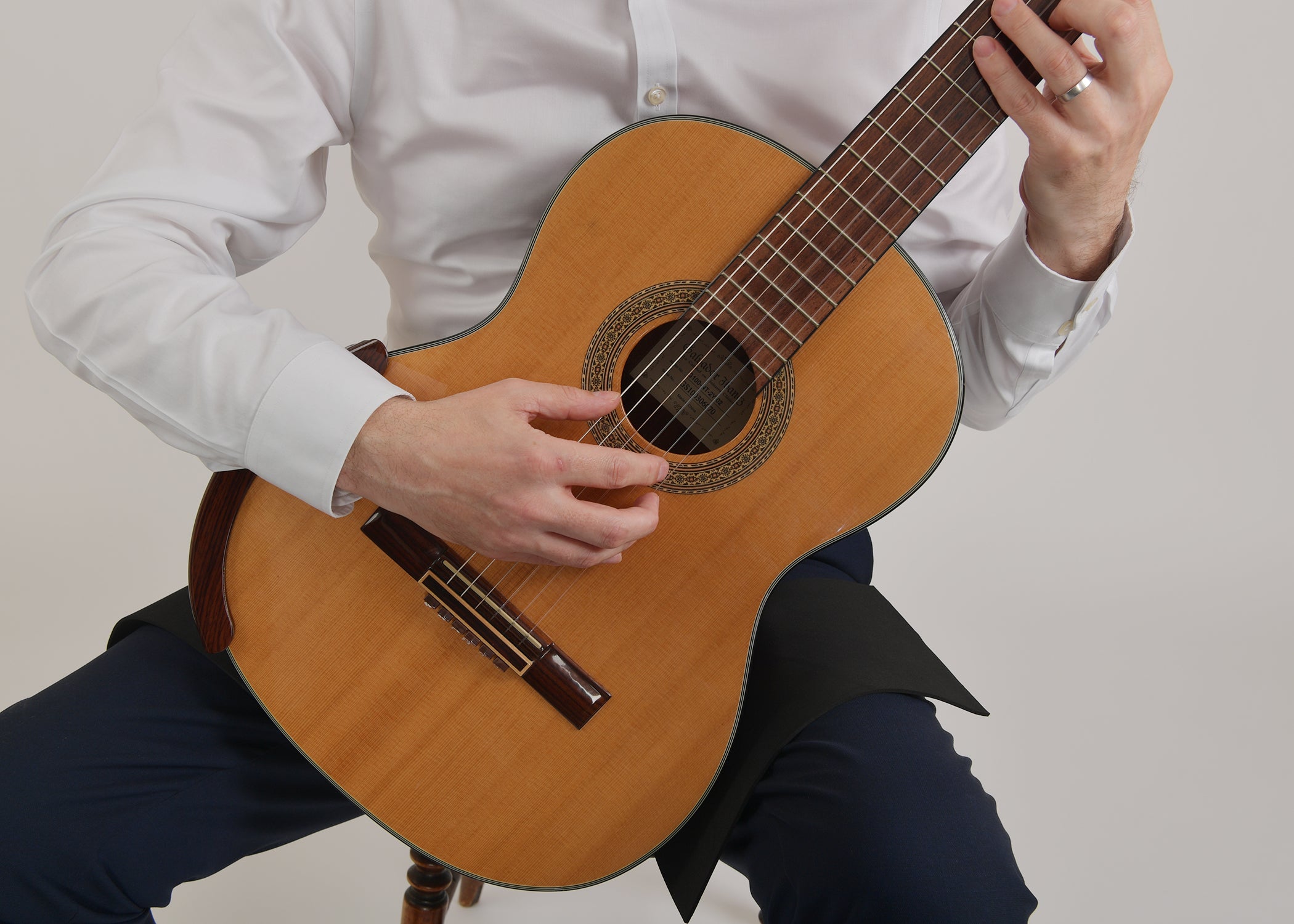The sound of a classical guitar is determined largely by the tonewood used for the top, also known as the soundboard. Of all the elements in a guitar’s construction, this single piece of wood plays the most significant role in how the instrument transmits and shapes string vibration into audible tone. Among classical guitars, the two most common top woods are spruce and cedar. Each has become a preferred choice among makers and players for different reasons—though the differences are often misunderstood or mischaracterised in ways that lack grounding in fact or history. A more accurate understanding requires examining their physical properties, how they behave under string tension, how builders work with them, and how players use them in real-world settings.
Spruce has been used in classical guitar making for over two centuries. The most common species is European spruce, often sourced from the Alps or central Europe, known for its tight grain and low weight-to-strength ratio. Sitka spruce and Engelmann spruce are also used, though more common in North American instruments. Spruce tops are typically pale or golden when new and gradually darken with age. Structurally, spruce can withstand high tension with minimal mass, allowing builders to keep the top thin without compromising durability. This low mass contributes to its responsiveness across a wide frequency range. Historically, spruce was the dominant top wood used by makers such as Antonio de Torres, Hermann Hauser, and Ignacio Fleta. Its role in shaping the modern classical guitar is foundational, and many luthiers still rely on spruce when building traditional fan-braced instruments.
Cedar, by contrast, came into prominence in the classical guitar world much later. The most widely used species is Western red cedar, which is technically a type of cypress and not a true cedar. It became more commonly adopted by classical guitar builders in the mid-20th century, particularly through the work of José Ramirez III, who introduced it into his concert guitars after finding it offered a reliable alternative to spruce. Compared to spruce, cedar has a lower stiffness-to-weight ratio and tends to be darker in colour with a more open grain. These structural differences lead some builders to adjust their bracing patterns to compensate for its softer nature, often using slightly thicker tops or more supportive fan bracing. Despite these modifications, many respected concert instruments are built with cedar and used by high-level performers.
The notion that cedar and spruce sound radically different is often overstated. While some general tendencies are observable—such as cedar’s quick response to light attack or spruce’s perceived headroom—these traits vary dramatically based on how the guitar is built. A spruce top made by a highly skilled luthier using ultra-thin wood and refined bracing may respond with as much immediacy as any cedar top. Likewise, a cedar guitar built with thicker soundboard dimensions may behave more like a spruce instrument. What matters most is the total interaction between the top, the bracing, the body shape, and the player’s technique.
In terms of construction, cedar is often easier for builders to work with due to its lower density. It’s more forgiving during the planing, carving, and voicing processes, which may explain its increased adoption among modern luthiers. Some makers find that cedar allows for more predictable results during tuning and graduation. Others prefer the stiffness of spruce for lightweight, sensitive tops that allow for subtle variations in tone production. Some luthiers work interchangeably with both materials and adapt their methods to bring out the strengths of each.
There is no fixed rule about which style of music suits one wood better than the other. Classical guitars made with cedar or spruce are used across a full range of repertoire—from Renaissance and Baroque compositions to contemporary Latin American and Iberian works. South American guitarists such as Agustín Barrios Mangoré and Leo Brouwer often played on guitars made with both woods at various times in their careers. Likewise, European performers have recorded entire bodies of traditional and modern repertoire on both cedar and spruce guitars. The material of the soundboard does not restrict the suitability of the guitar to a specific genre or playing style. It may shape subtle aspects of tone and tactile response, but it does not determine what can or cannot be played.
In recent decades, some makers have begun combining the characteristics of both tonewoods through double-top construction. This technique, pioneered in Germany and later adopted internationally, involves layering two thin outer plates of spruce and cedar around a synthetic core such as Nomex. The result is a lightweight composite that can be voiced to match the luthier’s desired characteristics. These guitars are not necessarily louder or more responsive, but they allow for flexibility in design. Some builders use this method to produce consistent performance across concert instruments, especially when catering to players who demand specific tonal and tactile outcomes. Well-known concert models built with double tops include offerings from brands such as Alhambra, Hanika, and selected boutique workshops.
Among mass-market classical guitars, both spruce and cedar tops are available across a range of price points. Entry-level models such as the Yamaha C40 or Cordoba C3M offer laminated cedar or spruce tops with simplified construction aimed at students. Mid-range guitars like the Alhambra 5P or Esteve 9C offer solid tops and more refined finishes, often providing access to tonal qualities more commonly found in higher-end instruments. Models like the Ramirez Studio 1, Cordoba C12 SP, or Yamaha GC series continue to be benchmarks for players seeking fully solid wood instruments with reliable construction, whether in spruce or cedar.
It’s worth noting that strings can influence the tonal character of the top wood. For spruce guitars, players often opt for high-tension or carbon trebles to add warmth and sustain. For cedar tops, many prefer normal tension nylon strings that preserve the wood’s softer character. Brands such as Alba GB Strings, D’Addario, Savarez and Knobloch, offer variations of strings tailored to the different resonant behaviours of spruce and cedar. While the string choice will not radically transform a guitar, it can help balance certain qualities, depending on player preference and technique.
As with all elements of classical guitar construction and tone, context is important. The way a spruce or cedar top performs in a solo setting may differ from how it behaves in a small ensemble or during home practice. Environmental factors such as humidity, temperature, and room acoustics also affect how each wood projects and sustains sound. For this reason, professional players often own and rotate between several guitars to match the context of each performance. The differences between spruce and cedar are part of a wider continuum of tonal possibilities, not a fixed binary choice.
Ultimately, the decision between spruce and cedar comes down to the guitar as a whole. Players are encouraged to test multiple instruments in the same setting to hear how each reacts under their hands. Rather than fixating on the wood species alone, it’s more useful to evaluate how a guitar feels, how it responds to different techniques, and how it suits the player’s own sound goals. Many guitarists eventually find themselves drawn to one material more than the other, but this preference often develops through experience, not assumption.
In the hands of a skilled builder, both spruce and cedar can produce world-class instruments. They are not in opposition but in conversation—each offering a different but equally valid pathway to the voice of the classical guitar. Instead of seeking a winner between the two, players might benefit from understanding how both materials have shaped the history and diversity of the instrument itself. The legacy of luthiers like Antonio de Torres, Hermann Hauser, José Ramirez III, and Daniel Friederich reflects how material choice intersects with design, craft, and player demand—not with fixed tonal categories. The most meaningful difference is found not in abstract comparisons, but in how each guitar speaks to the hands and ears of the individual who plays it.





Dejar un comentario
Este sitio está protegido por hCaptcha y se aplican la Política de privacidad de hCaptcha y los Términos del servicio.